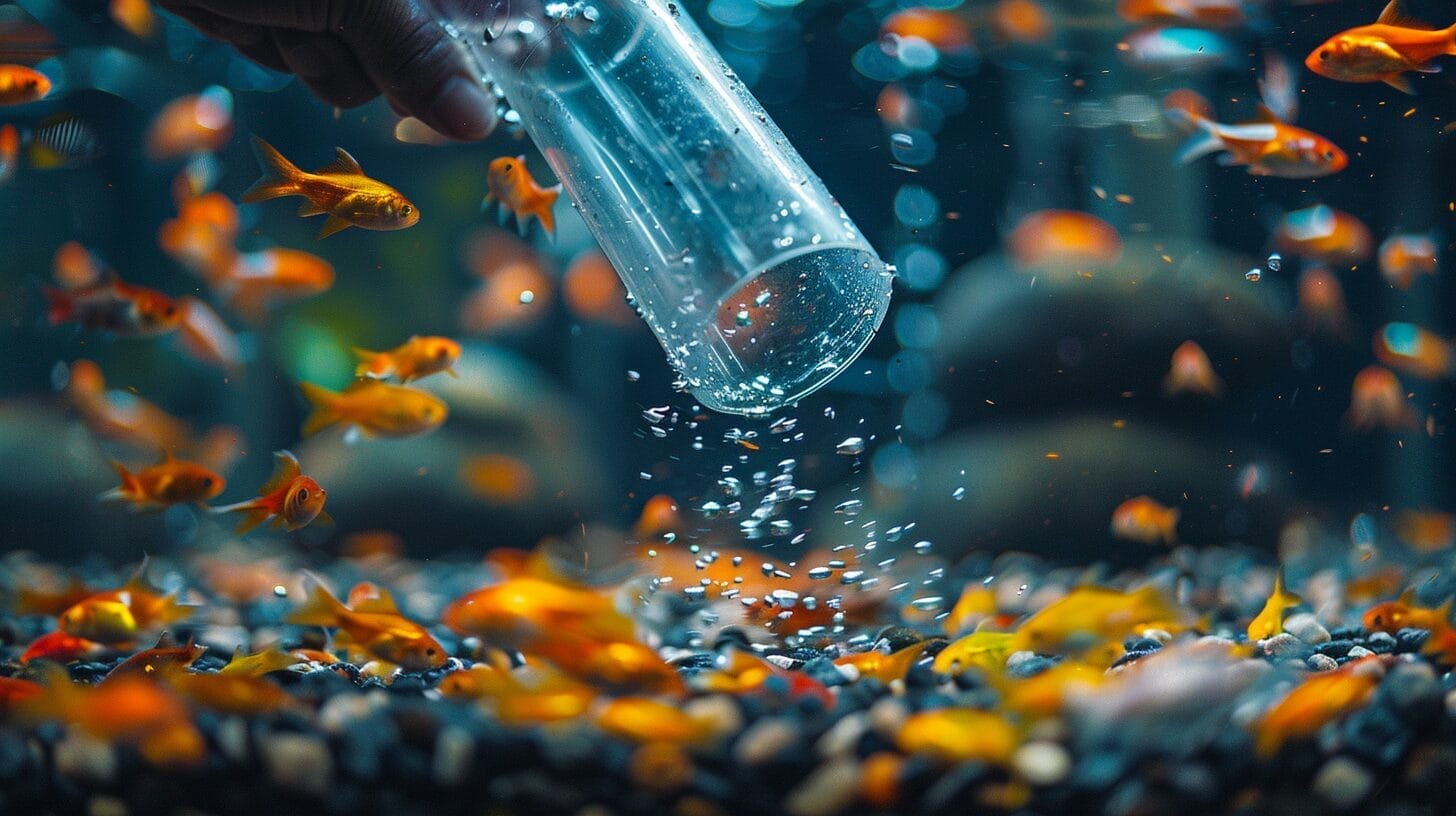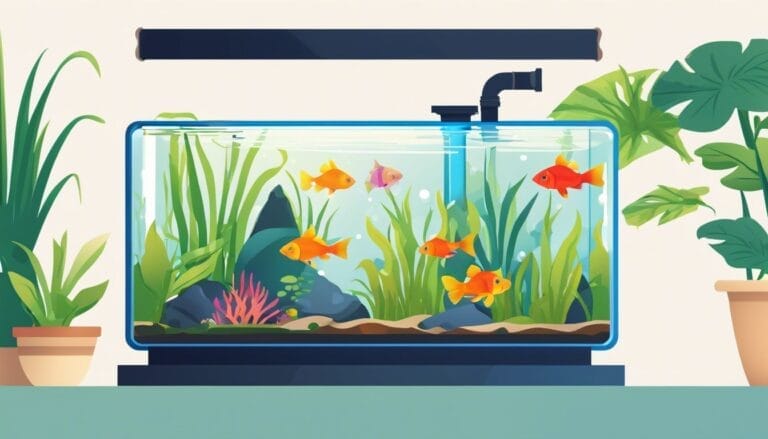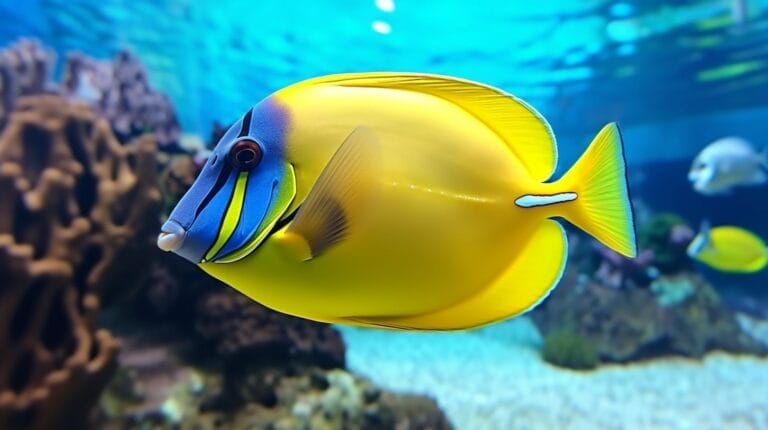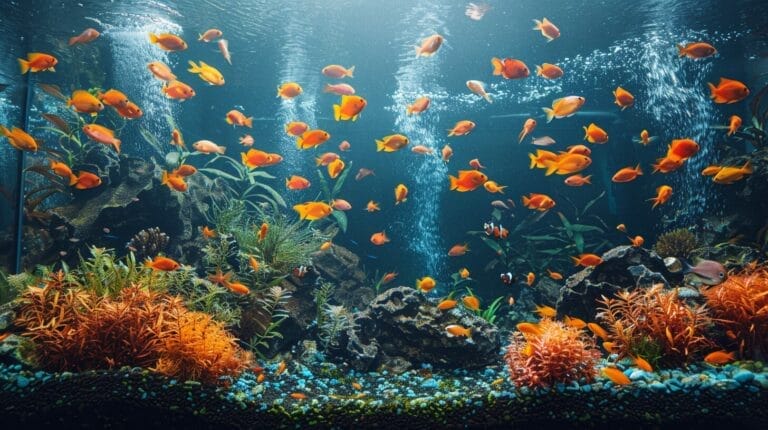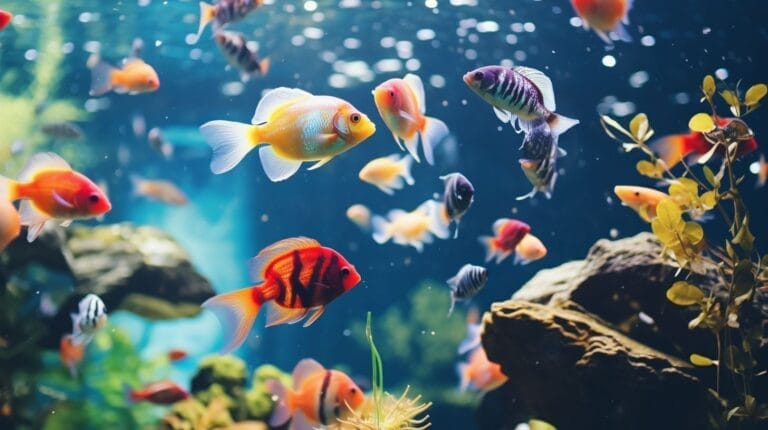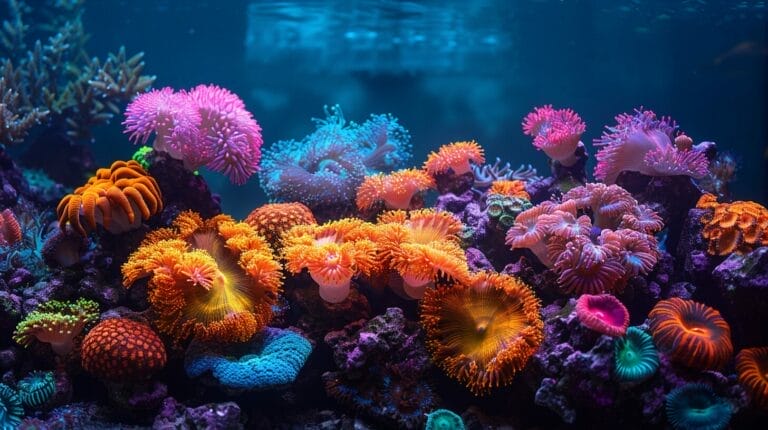How to Vacuum Fish Tank: Aquarium Maintenance Made Easy
Maintaining a fish tank is like tending to a miniature underwater ecosystem that requires our attention to thrive. The key to a healthy aquarium lies in its cleanliness, which is where using a gravel vacuum to clean aquariums comes into play. But how exactly do you go about vacuuming a fish tank efficiently without causing stress to your aquatic friends?
Let’s uncover the secrets to mastering this essential aspect of aquarium maintenance, ensuring your fish tank remains a pristine habitat for its inhabitants with our How to Vacuum Fish Tank guide.
Key Takeaways
- Regular aquarium cleaning is crucial for fish health and water quality.
- Use appropriate tools like gravel vacuums for effective maintenance.
- Proper preparation and technique ensure efficient gravel vacuuming.
- Post-vacuum care includes water testing, filter maintenance, and regular observation.
Understanding the Importance of Regular Aquarium Cleaning
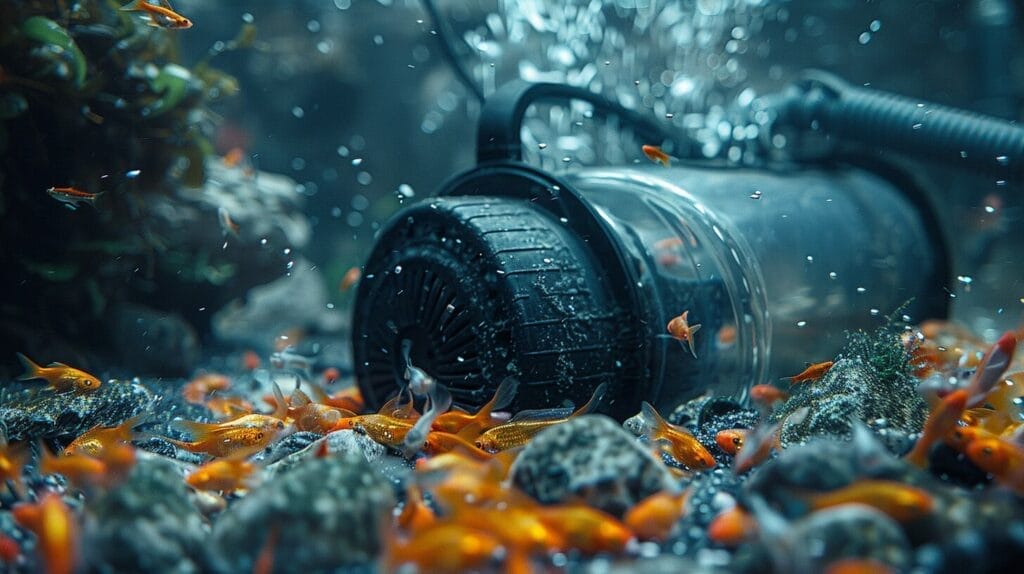
Regularly cleaning your aquarium is essential for maintaining a healthy and thriving aquatic environment for your fish. Fish waste and leftover food can accumulate in the substrate, leading to the production of toxic ammonia. This ammonia buildup can be detrimental to your fish, causing stress and potentially shortening their lifespan. By performing routine water changes and gravel vacuuming, you can effectively remove these harmful substances and maintain optimal water quality.
In an aquarium, beneficial bacteria play a crucial role in breaking down waste and ammonia into less harmful byproducts. However, these bacteria need a clean environment to thrive and perform their job effectively. Without regular cleaning, excess waste can overwhelm the beneficial bacteria population, leading to spikes in ammonia levels and creating a toxic environment for your fish.
Neglecting regular aquarium cleaning can have severe consequences for both the fish and the overall ecosystem within the tank. It can lead to increased stress levels for the fish, making them more susceptible to diseases and other health issues.
Additionally, poor water quality resulting from lack of cleaning can stunt the growth of aquatic plants and disrupt the delicate balance of the aquarium environment. Therefore, by understanding the importance of regular maintenance, you can create a healthy and sustainable habitat for your aquatic pets.
Exploring the Tools Required: The Aquarium Vacuum and Gravel Cleaner
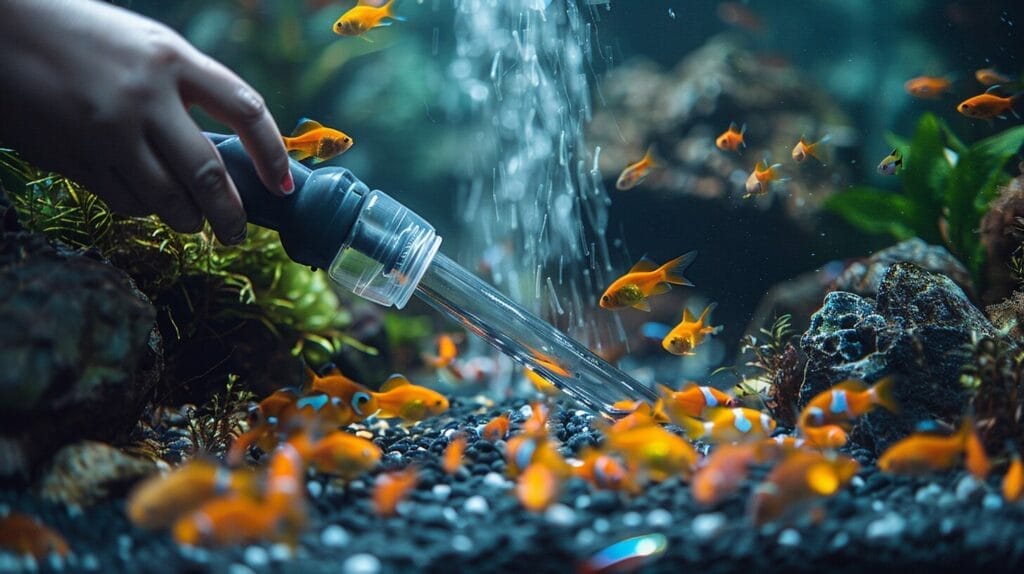
When maintaining an aquarium, having the right tools, such as an aquarium gravel vacuum and gravel cleaner, is essential for proper upkeep. The aquarium vacuum, also known as a gravel vacuum or siphon, plays a crucial role in tank maintenance by efficiently removing debris and waste from the aquarium substrate. These tools come in various types, including manual siphons and electric gravel cleaners, each offering different levels of suction power to suit different tank sizes and cleaning needs.
Here is a simple table that provides an overview of the different types of aquarium vacuums and gravel cleaners:
| Type | Description | Suction Power |
|---|---|---|
| Manual Siphon | Simple design operated by manual pumping to create suction for debris removal | Moderate |
| Electric Cleaner | Powered by electricity, provides automated suction for efficient cleaning | High |
| Battery-Powered | Offers mobility with battery operation, suitable for tanks without power access | Moderate to High |
Selecting the appropriate aquarium gravel vacuum or gravel cleaner based on your tank size and the amount of debris present is crucial for effective tank maintenance. Understanding the suction power capabilities of these tools can help you choose the right one to keep your aquarium substrate clean and your fish healthy.
Preparing Your Fish Tank for Vacuuming: What You Need to Know
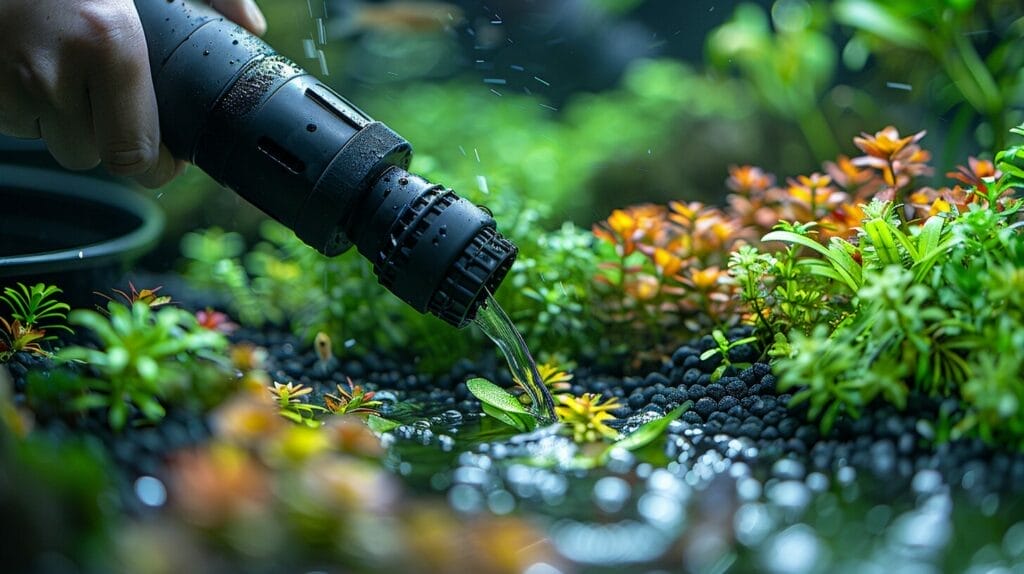
To ensure the safety and well-being of our aquatic friends, it’s essential to start the siphon and take necessary precautions before vacuuming the fish tank with a gravel cleaner. Before diving into the cleaning process, let’s equip ourselves with the knowledge and tools like a gravel vacuum and sponge filter needed for a successful aquarium maintenance session.
- Clean Gravel: Ensuring the gravel in your fish tank is free from debris and waste is crucial for the health of your aquatic pets.
- Gravel Vacuum: Having a reliable gravel vacuum will make the cleaning process more efficient and effective.
- Clean Water: Maintaining clean water and using a vacuum gravel cleaner is essential for the overall well-being of your fish and other tank inhabitants.
- Filtration: A properly functioning filtration system is key to keeping the water clean and clear.
- Substrate: Understanding the type of substrate in your tank is important as it can impact the cleaning process and the overall health of your aquarium ecosystem.
Step-by-Step Guide: How to Use a Gravel Vacuum to Clean Fish Tank Gravel
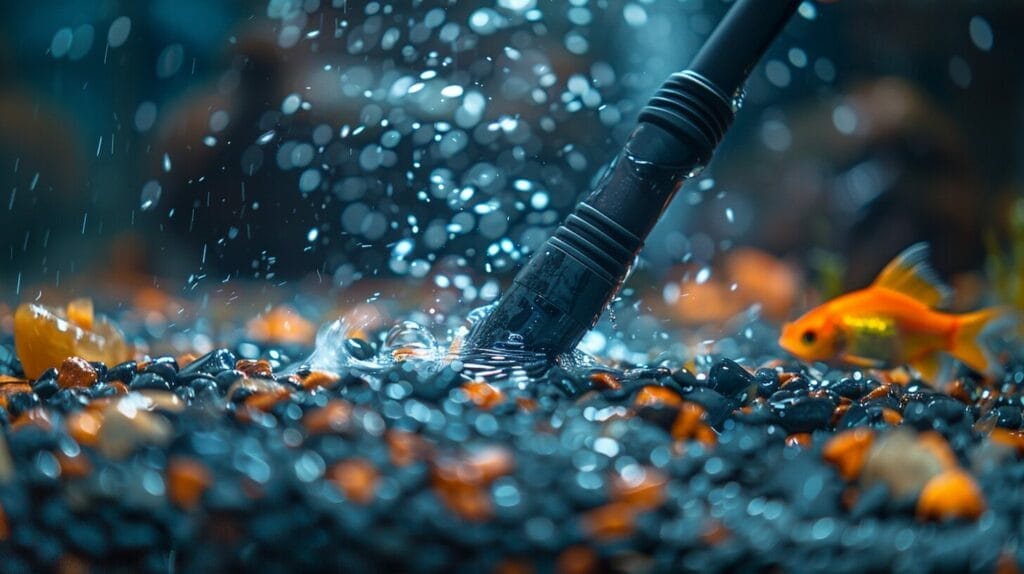
Before we get into the specifics of using a gravel vacuum to clean your fish tank gravel, it’s important to understand the significance of maintaining a clean aquarium environment for the well-being of your aquatic pets.
Using a gravel vacuum is an efficient way to remove debris and waste that accumulates at the bottom of the tank, helping to maintain water quality and create a healthier habitat for your fish. Here is a step-by-step guide on how to use a gravel vacuum to clean fish tank gravel:
- Position the Vacuum: Place the vacuum in the tank and ensure the suction end is in contact with the gravel at the bottom of the tank. Avoid using strong suction to prevent harming fish.
- Start the Suction: Begin the siphon action as per the manufacturer’s instructions to create a flow of water through the vacuum. Move the vacuum in a grid-like pattern for thorough cleaning.
- Clean the Gravel: Gently push the vacuum into the gravel and lift it to remove debris while leaving the gravel undisturbed. Focus on areas with excess fish food and waste buildup.
Post-Vacuuming Care: Maintaining Your Cleaned Aquarium

After vacuuming your fish tank gravel, it’s important to implement proper post-cleaning care to maintain a healthy and clean aquarium environment for your aquatic pets. Here are five essential post-vacuuming care tips to keep your aquarium in top shape:
- Regular Water Testing: Check water conditions frequently to ensure optimal levels for your fish.
- Monitor Detritus Build-Up: Keep an eye on any accumulation of waste or debris and vacuum as needed.
- Scheduled Filter Maintenance: Clean or replace filters regularly to maintain water quality and clarity.
- Routine Water Changes: Perform regular water changes to prevent the build-up of harmful substances.
- Observation and Adjustment: Monitor fish behavior and tank conditions, making adjustments as necessary for a thriving aquatic environment
Conclusion
Overall, vacuuming your fish tank is a simple yet crucial task in maintaining a healthy and clean aquarium environment for your aquatic pets.
By regularly cleaning the gravel and removing debris, you can prevent harmful build-up and ensure the well-being of your fish.
With the right tools and proper technique, aquarium maintenance can be easy and rewarding.
Remember to keep up with routine cleanings to keep your fish tank looking its best!
Frequently Asked Questions
How often should I clean aquarium gravel?
It is recommended to clean your gravel every 2-4 weeks to remove uneaten food, waste, and debris that can accumulate in the tank.
Can I clean fish tank gravel without a vacuum?
Yes, you can clean your tank gravel without a vacuum by using a siphon or manually stirring the gravel to release debris and waste, then removing it with a net.
How do I clean new aquarium gravel before adding it to the tank?
To clean new aquarium gravel, rinse it thoroughly under running water until the water runs clear to remove dust and debris that may be present from the manufacturing process.
What is the best way to start vacuuming aquarium gravel?
To start vacuuming, simply insert the siphon into the gravel, initiate the siphoning action, and slowly move the siphon through the gravel to remove waste and debris while also performing a water change.
Do I need to clean the filter when cleaning the fish tank gravel?
Yes, it is recommended to clean the filter when performing a gravel cleaning to ensure optimal filtration efficiency and maintain a healthy aquatic environment for your fish.

